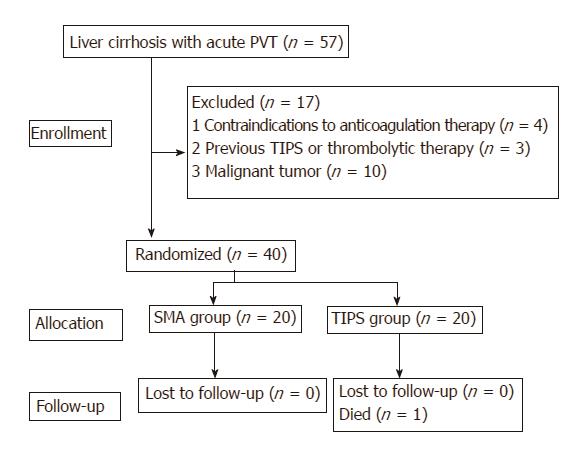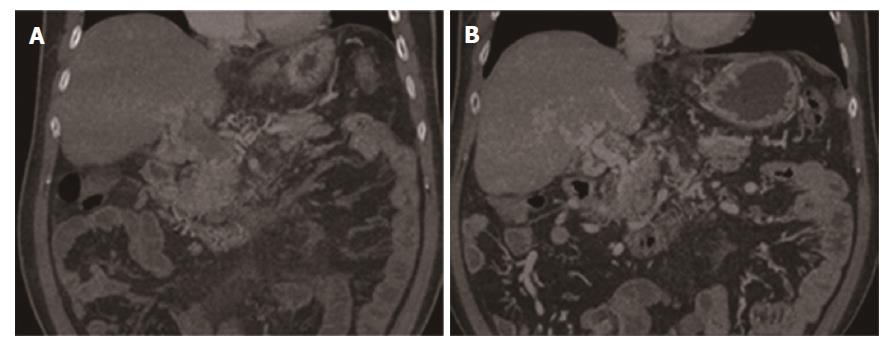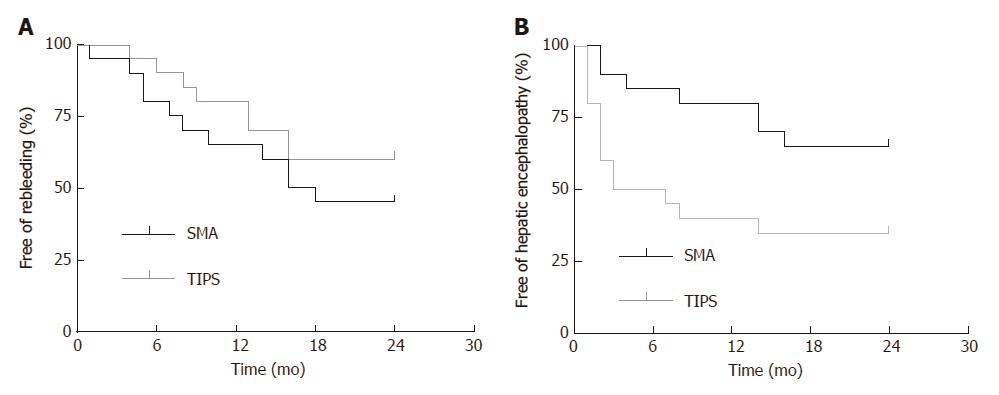Copyright
©The Author(s) 2017.
World J Gastroenterol. Nov 7, 2017; 23(41): 7470-7477
Published online Nov 7, 2017. doi: 10.3748/wjg.v23.i41.7470
Published online Nov 7, 2017. doi: 10.3748/wjg.v23.i41.7470
Figure 1 The process of patient inclusion and exclusion.
PVT: Portal vein thrombosis; TIPS: Transjugular intrahepatic portosystemic shunt; SMA: Superior mesenteric artery.
Figure 2 Contrast images of angio-computed tomography before and after transcatheter selective superior mesenteric artery urokinase infusion therapy in a patient.
A: A patient with MPV complete blocking and cavernous transformation (grade III) before urokinase infusion; B: 6 mo after urokinase infusion, MPV achieved sustained recanalization, but there was still cavernous transformation.
Figure 3 Rebleeding and hepatic encephalopathy in the two groups.
A: Cumulative rate free of the first episode of rebleeding in the superior mesenteric artery (SMA) group and transjugular intrahepatic portosystemic shunt (TIPS) group (P = 0.320, log-rank test); B: Cumulative rate free of the first episode of hepatic encephalopathy in the SMA group and TIPS group (P = 0.022, log-rank test).
- Citation: Jiang TT, Luo XP, Sun JM, Gao J. Clinical outcomes of transcatheter selective superior mesenteric artery urokinase infusion therapy vs transjugular intrahepatic portosystemic shunt in patients with cirrhosis and acute portal vein thrombosis. World J Gastroenterol 2017; 23(41): 7470-7477
- URL: https://www.wjgnet.com/1007-9327/full/v23/i41/7470.htm
- DOI: https://dx.doi.org/10.3748/wjg.v23.i41.7470











